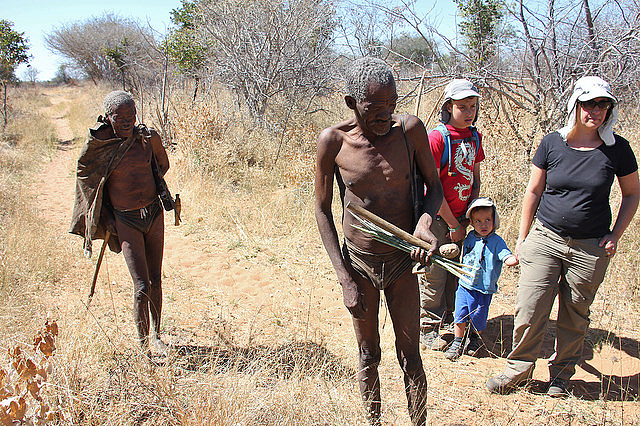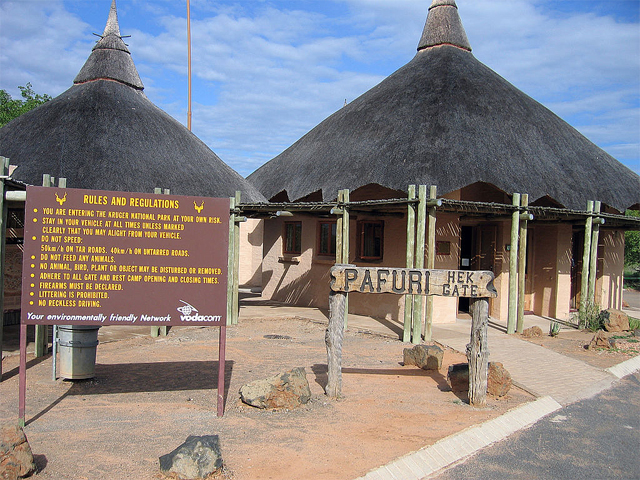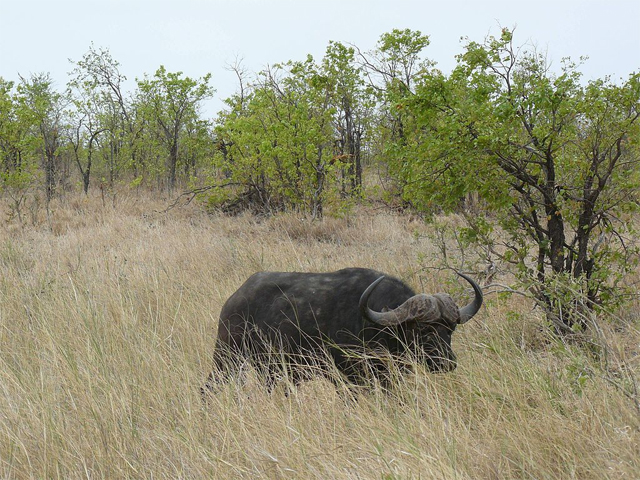A blog post on September 20 provided an account of the tracking skills of several master Ju/’hoansi trackers in South Africa’s famous Kruger National Park. The tracking skills of the Ju/’hoansi for human footprints in Peche Merle Cave were described in a news story in October 2013, then analyzed in a journal article in 2017.

The most recent report, published in the website Africa Geographic, focused not on human footprints but on the tracks of animals. The interesting angle to the story was that the trackers were entertaining tourists in an unfamiliar environment 750 miles east of the habitat where they normally track game animals. Their skills, according to the recent account, are remarkable.
The author of the blog post, Clive Thompson, opens his story by mentioning that he first visited three of the trackers in Xa/oba, a community in the Nyae Nyae Conservancy of northeastern Namibia. He refers to /ui-Kxunta, /ui-G/aqo and ≠oma Daqm as “three old-way geniuses” who are formally designated as cultural treasures by Namibia. They demonstrate how they can track a gemsbok for a couple hours in the searing desert heat. They point out the tracks in the sand of a black-backed jackal and a bat-eared fox.
The heart of Thompson’s story is on the skills of the trackers in Kruger. He personally finds the mopane thickets of Kruger to be intimidating—every bush looks alike to the unskilled visitor. He doesn’t explain why the trackers are in South Africa so the reader guesses that they are there as paid guides for tourists who want to witness ancient African skills.

The three master trackers from Namibia plus a fourth tracker named Dam Debe meet on June 28, 2018, at the Pafuri Gate of the Kruger National Park. During their first day they get an orientation and sight civets, a nyala, a bush buck, and a white-tailed mongoose, all of which were new to the Ju/’hoansi. They follow the tracks of an eland and narrate what it was doing for the others: the bull eland stopped here, half turned and looked back here. And here it nibbled a bit on the mopane twigs. See the crumbs on the ground and the moist twigs. But then, see here, it trotted off.
At another point the group follows roan tracks for a bit until they notice the track of a mamba, a deadly snake. A few hours later, on their way back through the bushes toward where the trackers know the vehicles are parked, the guides casually point out the mamba bush, which is indistinguishable from all the others to everyone else.

The next day they visit a San rock art site and, along the way, the trackers warn the group that there are buffalo ahead in the thicket—before anyone had heard or seen anything. Then, to test the skills of one of the trackers, the author asks him to take him back to their vehicle, located some distance away over several brush-covered hills. It had taken them 45 minutes to beat their way into the rock art paintings; it takes the tracker 20 minutes to get him back, cutting directly across the country.
One of the three Ju/’hoansi trackers, /ui-G/aqo, tells a story of how he was out hunting alone in the Nyae Nyae bush years ago when he went to sleep in an acacia thicket. While he slept in the middle of the night, he was surrounded by a pride of lions. He told his listeners that his human spirit spoke to the spirits of the lions, telling them to leave him alone. They did so.

The author is reflecting on this tale as they wander through another part of the park examining the marks of a lion and a lioness. The trackers suddenly announce that the lions they are following have switched from an ambling along mode to serious hunting. How do they know that? Because the tracks are a little farther apart and their paw prints in the sand are slightly smaller, which shows that their muscles are getting tense, they reply. The trackers stop to point out where the lions stopped a while and looked off to the right.
The trackers walk 25 yards off in the direction the lions had been looking and spot where a bull buffalo had been wandering along when he suddenly smelled the lions, stopped, and stared. Then he took off, as his tracks testify, and the lions took off after him. But they soon gave up the chase.
Thompson concludes his story by saying that everyone in the group is overwhelmed by the skills of the trackers. Each of the tracking episodes ends with everyone shaking their heads “in stunned appreciation” at the quality of the performance. An ancient art is kept alive by a select few.